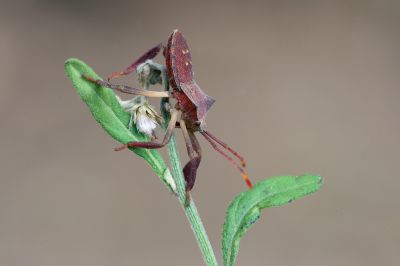One of the biggest challenges facing natural history experts is how to
classify and share the mass of data constantly being collected on the
Earth’s millions of species.
The three-year VIBRANT project developed a network of online
scientific communities collecting data on biodiversity and equipped them
with the tools for sharing and publishing their data. Through these
activities the project contributed to reducing the fragmentation of
efforts aiming to develop biodiversity informatics systems and software.
Based on Scratchpads, an open-source and free to use online
platform, VIBRANT has helped create hundreds of new online communities.
The communities are linked together online and feed their data into
the most important international biodiversity databases. VIBRANT helps
users prepare papers for publication, build bibliographic databases and
create reference collections of images and observations. A tool for
rapid geospatial analysis of species distributions, a citizen-science
marine monitoring platform as well as a biodiversity data analysis
framework are also part of the ecosystem of services developed by
VIBRANT.
ANTS TO BATS, LOBSTERS TO WHALES
VIBRANT has grown the number of user communities from around 100
under EDIT, an earlier EU project, to over 580 today. Some 6 500 active
users are investigating an enormous range of species, at global scale.
One site alone on stick insects (phasmids) has over 1 000 users,
revealing the large community of people interested in culturing phasmid
species.
‘My taxonomic background is in parasitic lice, of which there are
about 5 000 particular species that live on about 5 000 mammals and 10
000 birds. Fighting to study that group, I found it enormously difficult
to manage all this information,’ explained VIBRANT coordinator Dr Vince
Smith, of London’s Natural History Museum.
Using the Scratchpads template, professional and amateur scientists,
wherever they are based in the world, create their own subject-specific
websites hosted at the museum.
They share their data by publishing it online, while retaining
ownership over it and respecting the terms and conditions of the network
set up by VIBRANT.
Scratchpads also provides ready access to a range of analytical
tools, identification keys and databases that have been developed or
enhanced throughout the project.
VIBRANT has also set up a novel, community peer-reviewed,
open-access journal, the Biodiversity Data Journal (BDJ). Scratchpads
users can input their research into a template which then makes it
possible for them to produce a specific paper, publishing it
internationally, online, in the BDJ and crediting them for the research.
This is made possible via the development of the Pensoft Writing Tool
(PWT), which is a leading example of the next generation of scholarly
publishing. The PWT is acting as an integrated authoring, peer-review
publishing and online collaborative platform which links the Scratchpads
to the BDJ.
BIG DATA IN THE INTERNATIONAL CONSERVATION EFFORT
VIBRANT helps all researchers to easily share and link their data
with major biodiversity repositories. For example, the Scratchpads
collaborate with GBIF (the Global Biodiversity Information Facility),
PESI (the EU’s Pan-European Species directories Infrastructure), the
Biodiversity Heritage Library and the online collaborative Encyclopedia
of Life, which is aiming to document all the planet’s 1.9 million known
living species.
Dr Thomas Couvreur in Cameroon is maintaining a Scratchpads
community on African palms and the tropical plant family Annonaceae.
‘They provide a professional platform for collaboration between my
colleagues around the world, allowing us to share resources such as
photos of species, datasets, bibliography and general information,’ he
commented. Another coordinator, Eli Sarnat, in California, USA, has one
on ants: ‘The platform has solved a big challenge for me: what
biodiversity data I should be recording and how I should be recording
it.’
The VIBRANT project ran from December 2010 to November 2013. It
involved 17 partners from 9 countries, led by the Natural History
Museum, London, and received FP7 funding of 4.75 million euros.
Link to project's websiteOther links:
Scratchpads
